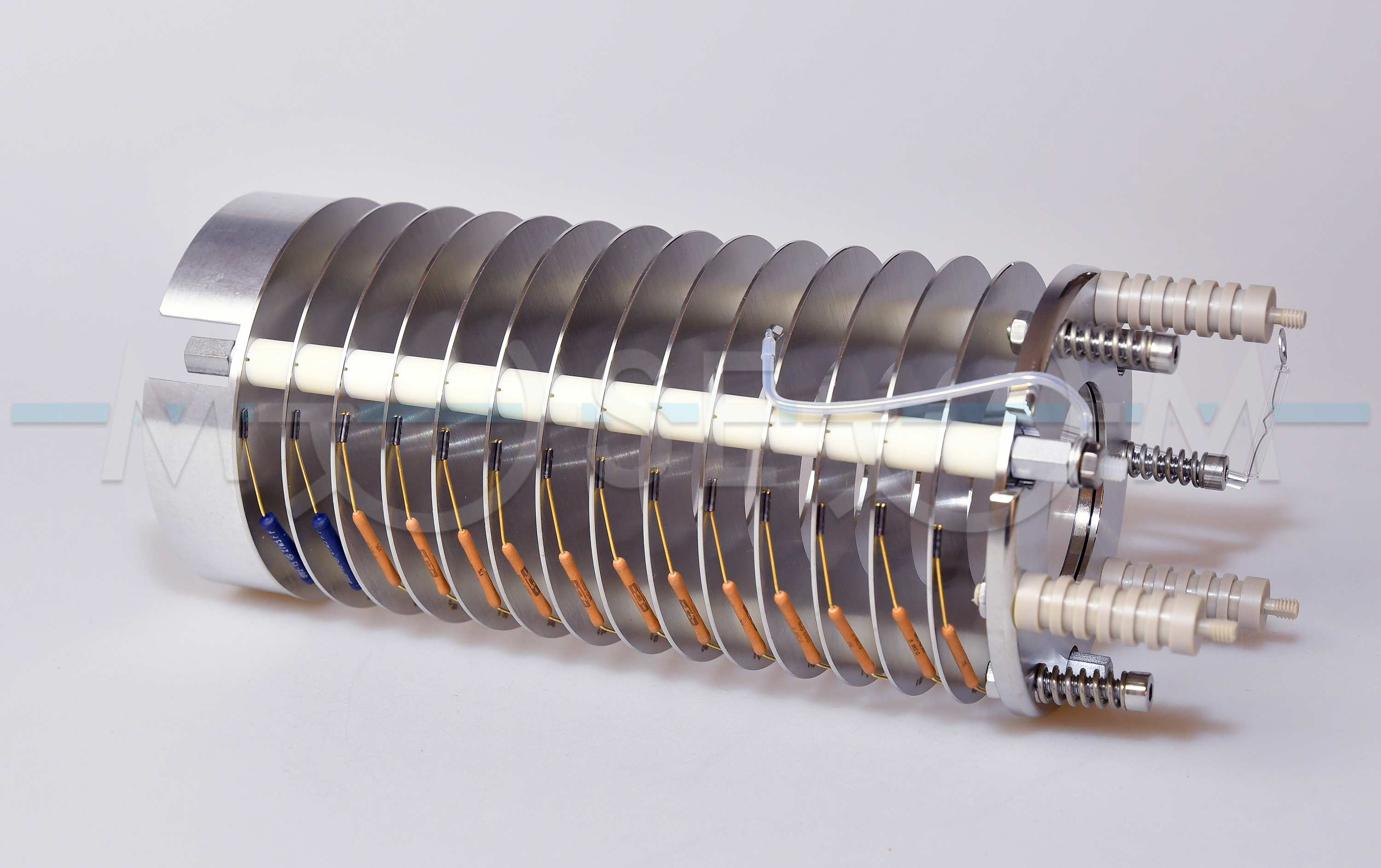Categories of exhibits
Reflectron
Exhibit no. 222
In time-of-flight mass spectrometry, ions are accelerated to the same kinetic energies, and the time taken to travel a fixed distance in a flight tube is then used to determine their mass-to-charge ratio. Ions of a particular mass-to-charge ratio reach the detector with a certain spread in arrival times. This is due to the uncertainty in the formation time of the ions, location in the extraction region, and initial kinetic energy of ions. All these effects result in reduced mass resolution. To improve the resolution, an ion optics device called a reflectron (or ion mirror) can be used. It makes use of an electrostatic field to reflect ions through a small angle towards a detector. Ions with the same mass-to-charge ratio but higher kinetic energy penetrate deeper into the reflector, delaying their time of arrival at the detector relative to the slower low-energy ions. This results in improved resolution and increased mass accuracy.
The exhibit is a gridless two-stage reflectron from the MALDI-TOF system Biflex II manufactured by Bruker Daltonics in the 1990s. It consists of fifteen metal ring electrodes that are electrically connected by resistors; it does not contain grids or wire mesh. Ions were retarded in the first stage and reflected in the second stage. The gridless two-stage design exhibited an added advantage of ion focusing due to its lens-type properties. The reflector axis was tilted with respect to the axis of the ion beam to ensure off-axis detection. It was set to a higher potential than the accelerating voltage to reflect ions efficiently.





